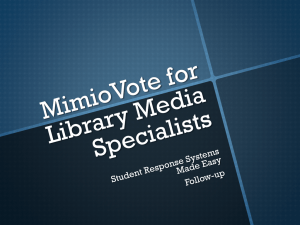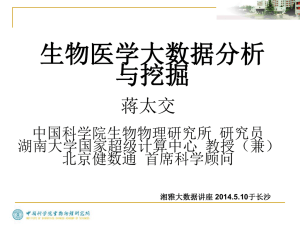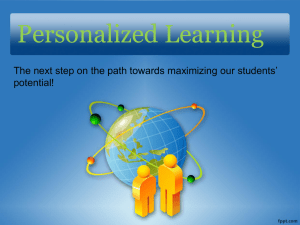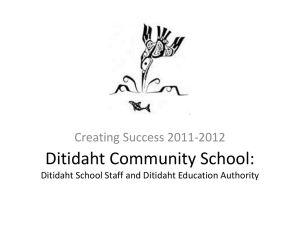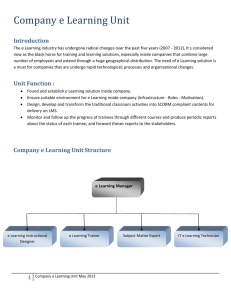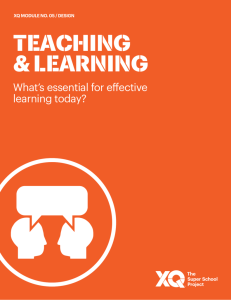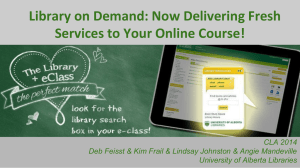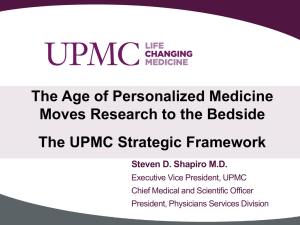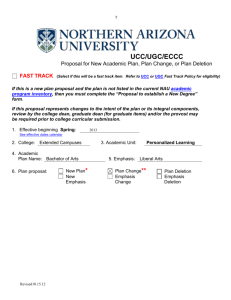Learning Management System - Delaware Center For Educational
advertisement
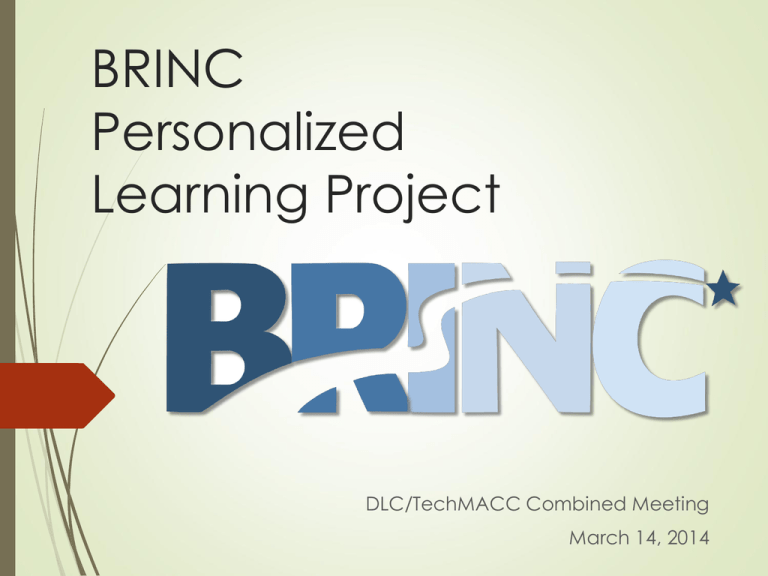
BRINC Personalized Learning Project DLC/TechMACC Combined Meeting March 14, 2014 is a Delaware educational project of the Brandywine, Indian River, New Castle County Vo-Tech, and Colonial school districts developing personalized learning opportunities for students. What is Personalized Learning? How many of you have heard or used the following terms? Online Learning Blended Learning Customized Learning Personalized Learning Mastery Learning Some educators tend to use several terms interchangeably, when we should be more specific. In this presentation, we’ll explore how to create and support a digital infrastructure that supports all of these models of 21st Century learning. Personalized Learning Learning in which the student: Drives their learning Connects with interest, talents, and passions Owns and is responsible for learning Identifies goals and plans for learning Builds a network of peers, experts, and teachers Demonstrates mastery of content Becomes self-directed expert learner who monitors progress and reflects on learning Adapted from Bray and McClaskey (2013) The Goal & The Vision A unified learning experience for every student that can be customized and personalized for the student, based on individual abilities, needs, and interests aligned to the mastery of standards. So, how do you get there? Instruction and Technology Like a good melody and harmony, these two components need to communicate and collaborate. One without the other diminishes the potential impact This means having hard conversations, airing differences, and finding compromises that work for everyone. One of the keys to supporting these initiatives is… …making smart decisions about the tools into which you invest your time and money. Infrastructure to Support Personal Learning Technology Criteria #1 Integrate Resources into One Place Utilize one tool to pull together all of the various tools and resources students and teachers are using for learning. Examples: Learning Management System A Learning Management System (LMS) is a software application for the administration, documentation, tracking, reporting and delivery of e-learning education courses or training programs. It may include: Digital Content Curriculum Sequence Gradebook Messaging protocol Calendar Be careful… Learning Management System ≠ Personalized Learning Technology Criteria #2 – Adherence to IMS Global Standards Common Cartridge A universal package for digital units and lessons, allowing them to move from one system to another Example: A teacher builds a course in BlackBoard and with one click can move it to Schoology Learning Tools Interoperability Support for the interaction with External Tools Example: A teacher can launch a BlackBoard Collaborate Session or use TurnItIn, right from within Canvas Technology Criteria #2 – Adherence to IMS Global Standards Learning Information Systems Allows platforms to pass information regarding students back and forth, such as classes, grades Example: A district requires that you use a certain gradebook software that is not the LMS gradebook. This allows grades to flow between the LMS and the district gradebook. Technology Criteria #2 – Adherence to IMS Global Standards Question & Test Interoperability/Accessible Portable Item Protocol These define a standard format for assessment questions. These questions can be presented and often scored within the LMS. Example: A teacher’s biology textbook comes with a disk of potential assessment items. If the questions follow one of these two standards, they can be imported into the LMS without re-typing them all in. For more information on standards, check out: http://www.imsglobal.org/ Technology Criteria #3 – Device Agnostic Think about adopting solutions that will function on any device, not just a single device. The right LMS can provide a single, unified experience for students and teachers. Technology Criteria #4 Tagging, Search, and Learning Analytics Learning Objects need to be shared in an organized and searchable way. Tags can be VERY useful to teachers: Common Core State Standards Next Generation Science Standards Keywords Author Date Type of Learning object Learning objects can be stored and shared through a learning object repository (LOR) across schools, districts, and consortium. Technology Criteria #5 Ease of Use and Training We required a system that is easy to use and implement. We tried a lot of potential products. We are piloting the project with 40 teachers before making larger scale commitments. The platform collects lots of analytics easily. Instructional Criteria #1 Craft Powerful Learning Experiences Organize Course with Scope and Sequence Textbook Media Resources (YouTube, Images, Websites) External Tools (Google Apps, Dropbox) Teachers create rich assignments, involving a variety of multimedia resources Instructional Criteria #2 Ease of Use Platform must be easy for teachers to create rich learning experiences. Platform must be easy for students to use. Students need to be engaged by the platform. It needs to be reliable and perform consistently. Example of Workflow Tagged with CCSS, NGSS Sequence of Learning Instructional Criteria #3 Automate some of the learning feedback loop Use technology to establish mastery requirements. Instructional Criteria #4 Standards, Data Reporting Being able to tag learning objects and track student progress according to standards is a must! Instructional Criteria #5 A System that evolves with teachers The system’s capabilities must have enough depth that teachers can continue to explore new options/capabilities/experiences. Schoology Live Demo Questions? Patches Hill Duane.hill@irsd.k12.de.us Steve Mancini Steve.mancini@nccvt.k12.de.us Ralph Landolfi ralph.landolfi@nccvt.k12.de.us Michael League Michael.league@irsd.k12.de.us
